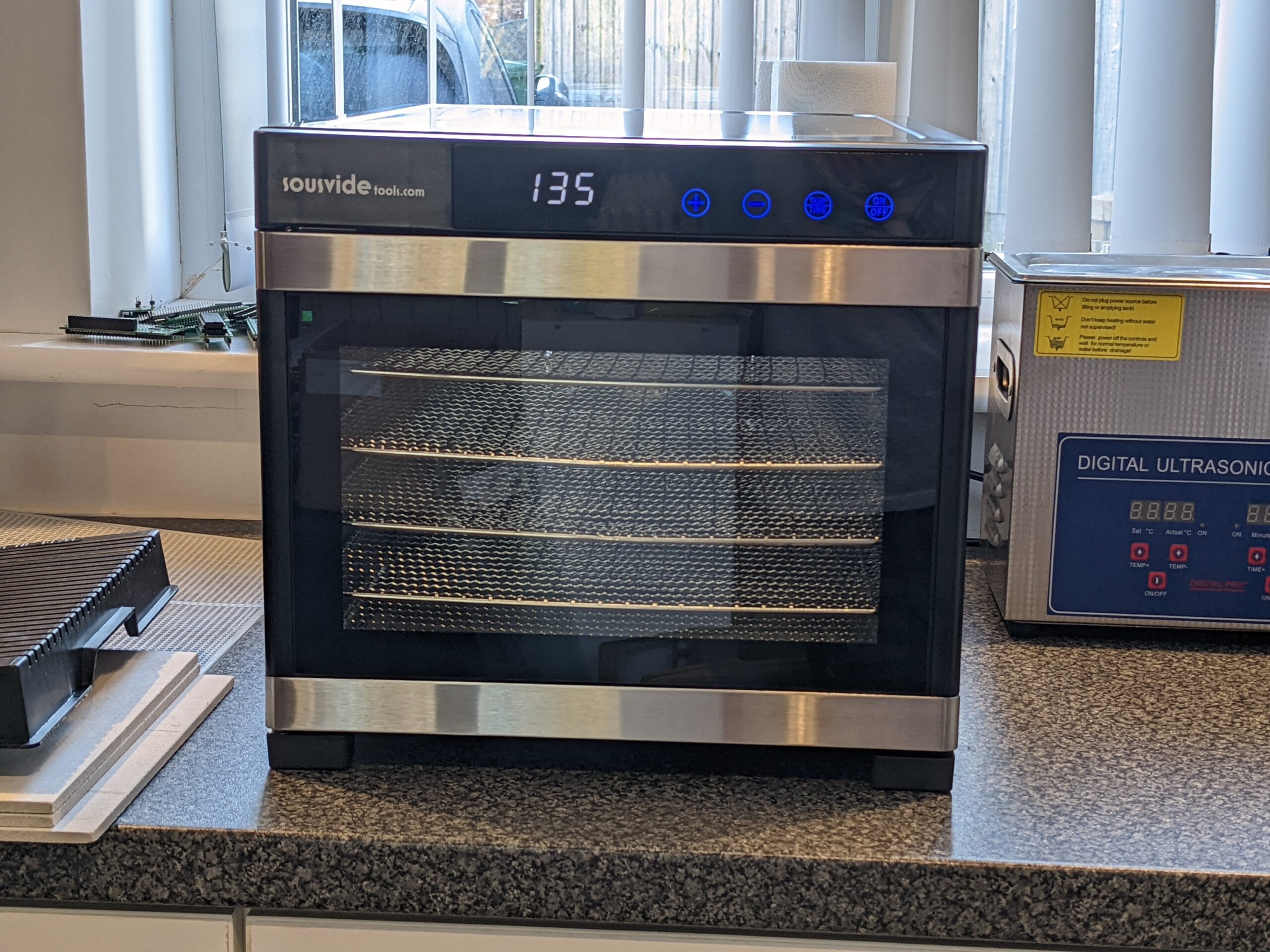When assembling PCBs they get quite dirty, a majority of this dirt is flux, it can be sticky and can caramelise onto the board. This is especially true when drag soldering through-hole with a knife tip, it can get very messy. There are several ways of cleaning it off, including scrubbing with sprays and some even use dishwashers. I personally use a small ultrasonic cleaner. But drying the PCBs after cleaning isn’t talked about as much so I figured I’d try something new.
When cleaning the PCBs I use my ultrasonic cleaner with RS Safewasher Super and then rinse in a bath of deionised water. Once this is done the PCBs need to be completely dried before they can be used.
Initially I was doing this with my heat gun set to a high blow / low temperature. Which is fine for a few boards. When you get to batches of 50 boards this is a tedious, long process.
After this I moved to using my reflow oven set to 100-150°C with full fan for as long as I could make it run for (roughly 10 minutes). This has been mostly fine, but has meant I haven’t been able to use it for reflow. I’ve recently started using reflow soldering processes a lot more so needed an alternative.
Initially I was looking at mini ovens that I could set to a low temperature, and then I came across a device I had never considered… A food dehumidifier.

This basically runs at a relatively low temperature for an extended period of time, has lots of racks which are the perfect size / height for PCBs and has a large fan at the back to circulate warm air.
For my experiment I bought the about Sous Vide branded dehydrator from Amazon. I washed 20x Amiga 500 RGBtoHDMI boards recently assembled and immediately dried them by setting it to the default 70°C for 2 hours. The 20 boards only took up one and a half of the six racks so there is plenty of space for more or larger boards.
After the two hours I opened it to take a look:

The boards came out perfectly dry, in fact I would say that they came out better than the previous method using the reflow oven.

I’m very impressed with the results and will definitely be using this method more in the future. If you were wanting to try this I recommend using a room with good ventilation as the machine essentially sucks in air from the back, heats it and the air comes out through vents on the sides near the front, along with any moisture. But pretty much any drying method would likely need ventilation or a condenser.


Leave a Reply